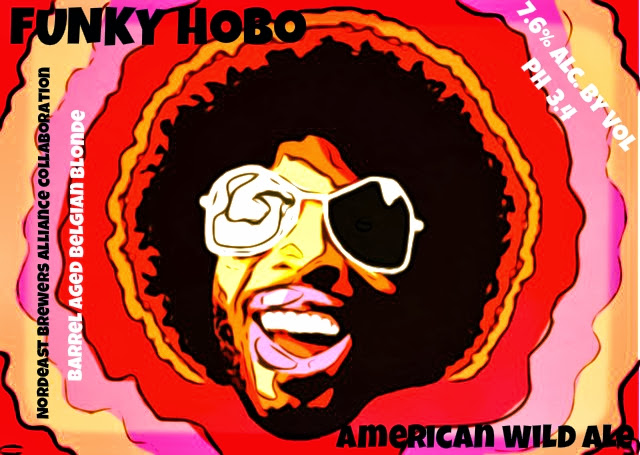On Farmhouse Ales, Our Fermentations & Authenticity
4 hours ago
On the label of every 750ml bottle of beer we make it states, “Jester King is an authentic farmhouse brewery located in the beautiful Texas Hill Country on the outskirts of Austin.” This is a statement we take very seriously, and we are constantly looking to breath more life into it. While we’ve embraced naturally occurring, wild microorganisms in our oak barrel fermentations since we opened in 2010, up until this past summer, our primary fermentations in staineless steel tanks were conducted with pure culture brewer’s yeast, specifically the French Saison strain. This is no longer the case. All of our fermentations now incorporate a diverse blend of microorganisms consisting of dozens of different types of yeast and bacteria. We’ve harvested naturally occurring wild yeast from the flora at our brewery and blended it with various types of Saccharomyces yeast, Brettanomyces yeast, and lactic acid producing bacteria to ferment all of our beer.

Wild yeast harvest experiment with flora from our land
We made this change to impart a greater degree of complexity, authenticity, and hopefully enjoyment to our beers. We’ve become somewhat troubled by the fact that beer we commercially refer to as “farmhouse ale” was fermented with pure culture brewer’s yeast. From everything we’ve been able to discern, this was not how these beers were fermented historically. In fact, all beer was once fermented at least in part with wild yeasts prior to the discovery, isolation, and widespread adoption of pure culture brewer’s yeast that helped give rise to the modern beer making practices we know today. This is not to denigrate pure culture fermentation, which has done wonders for consistency and quality control, and has been responsible for countless numbers of excellent beers. However, we agree with 20th century Belgian brewing scientist Marc H. Van Laer, who posits that the rise of pure culture fermentation has in some ways taken something away from beer making:
“It is certain that the introduction of pure yeasts into industrial fermentation does not constitute the crowning achievement of a system that is henceforth immutable. It seems, for example, that if the application of the pure cultures method has improved the average quality of the beer, if it has decreased the chances of infection, it has given us beer with less character than before.”
Due to the historical absence of pure culture fermentation in the making of farmhouse ales, each farmhouse brewery most certainly would have had its own unique house character and produced beer with a sense of place. To some extent, we lament the fact that our previous pure culture fermentations with French Saison yeast resulted in beers that did not exhibit a sense of place to the degree we would like to see. We’ve come to subscribe wholeheartedly to the description of farmhouse ales (in this case saison in particular) given by Belgian brewer Yvan de Baets of Brasserie de la Senne, as contained in Phil Markowski’s Farmhouse Ales:
“A saison must therefore be low in alcohol (in the modern — and Belgian — sense of the word in any case), around 4.5 to 6.5%. It must be highly attenuated (90 to 95% on average, if not more, as apparent attenuation) and dry. It must also be either sour or very bitter (with a bitterness obtained by the use of a massive amount of hops low in alpha acid). It shouldn’t in any case be smooth. If spices are used, it must be with the utmost moderation. A saison is not by any means a spice soup. Ideally, it should be fermented, at least partially, by wild yeasts as well as by cultured varieties. An authentic saison has a small “wild” side, rustic, indefinable, far from the clean aspect of certain engineered beers of today. In one word, it must have extraordinary character.”
On a practical level, the “either sour or very bitter” divide that De Baets describes is one we’ve latched onto. As previously mentioned, all of our fermentations now incorporate a variety of yeasts and lactic acid bacteria. For various beers such Le Petit Prince, Noble King, and Mad Meg, we use a large dose of organic noble hops to keep the bacteria in check. For other beers, we use much smaller doses of hops in order to allow a healthier environment for bacteria to impart acidity to the beer. We also now see a greater degree of attenuation in our beer with virtually all of the fermentable sugar being consumed. All of our fermentations are now reaching “super-attenuation” with finishing gravities of 1.000. Finally, the flavors and aromas from fermentation with wild microorgansims are apparent in all our beers.
Right below where it states “Jester King is an authentic farmhouse brewery…” on our labels, it states, “We brew what we like, drink what we want, and offer the rest to those who share our tastes.” While we are very excited about this change in the way we ferment our beer, we understand that not everyone will embrace it. We hope however that they can appreciate why we are compelled to make this change.










